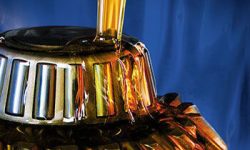How To Design A Successful Oil Analysis Program: Identify Critical Equipment
When you start implementing an oil analysis program, you need to decide what equipment in the plant to sample. This can be a daunting task but it cannot be overlooked. Supervisors and management need to take the time to identify the targeted equipment, write detailed procedures, establish routes, and sampling schedules.
Equipment critical to plant operations should be identified first. This equipment often does not have a backup unit to replace it when it is not in service. In addition, major repairs and overhaul of critical equipment often require a complete plant shutdown, substantial manpower and subsequent loss of production activities. Critical equipment in plants typically have these common characteristics:
- They require very high capital investment and are expensive to maintain and repair.
- They are engineered for long service lives when operated within design specifications and in a predictable environment.
- Many are quite large and are made up of several individual components.
- Downtime is quite expensive since production is usually halted when unexpected problems or a system failure is experienced.
Appropriate testing for critical equipment includes, but is not limited to:
- Wear metal analysis
- Moisture content
- Viscosity
- Acid number
- Analytical ferrography
- Particle counting





